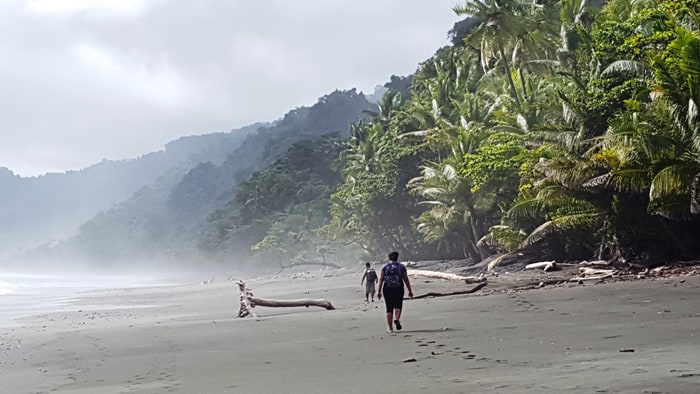Costa Rica’s Constitutional Chamber has struck down a resolution that increased visitor quotas at Corcovado National Park, ruling that the measure lacked scientific justification and violated environmental safeguards.
In its August 8 ruling, the court ordered Paula Mena, director of the Osa Conservation Area (Acosa) of the National System of Conservation Areas (SINAC), to revoke the resolution and issue a new one. The new policy must clearly establish the parameters and methodology used to regulate visitor flows and justify the daily entry and accommodation limits.
The case was brought by Frente Amplio legislator Ariel Robles, who argued that changes to daily admission and overnight quotas were made without scientific studies to ensure the park’s fragile ecosystem would not be harmed.
According to Robles, visits to the Sirena station were increased by 120 people per day, overnight capacity rose by 10, and cruise ship-exclusive quotas grew by 100, all without technical or scientific backing.
Robles said he had requested documentation from SINAC and found no evidence of studies supporting the increases, calling the move a violation of the precautionary principle in environmental management.
In its defense, SINAC submitted a statement from regional director Paula Mena, who maintained that a visitor management tool was in place and that the legislator’s claims were unfounded. She argued that the adjustments were necessary to help revive the economies of coastal communities affected by the COVID-19 pandemic.
Mena added that the tool allows the agency to measure environmental impacts and ensure quality visitor experiences, noting that Sirena’s current carrying capacity is based on existing infrastructure.
For Robles, however, the court’s decision highlights the need for transparency and scientific rigor in decision-making within the Ministry of Environment and Energy (MINAE).
“We welcome the Constitutional Court’s ruling, which vindicates us in yet another environmental battle,” he said. “You cannot increase visitation to a national park without knowing whether the ecosystem can support it, without resources to serve more people, and without a plan for managing waste, wastewater, or sanitation services. This can lead to serious pollution.”
Corcovado is one of the most biodiverse areas on earth. The National Park protects shallow lagoons, marsh, mangrove swamps, rivers, wet forest and low-altitude cloud forest, as well as 46 kilometers of sandy beach. It is home to countless animals and plants: approximately 6,000 insects, 500 trees, 367 birds, 140 mammals, 117 amphibians and reptiles, and 40 freshwater fish species.







